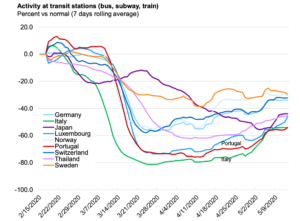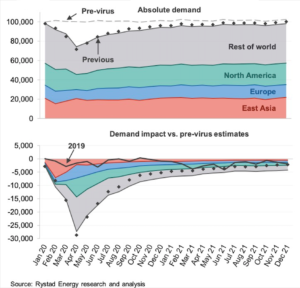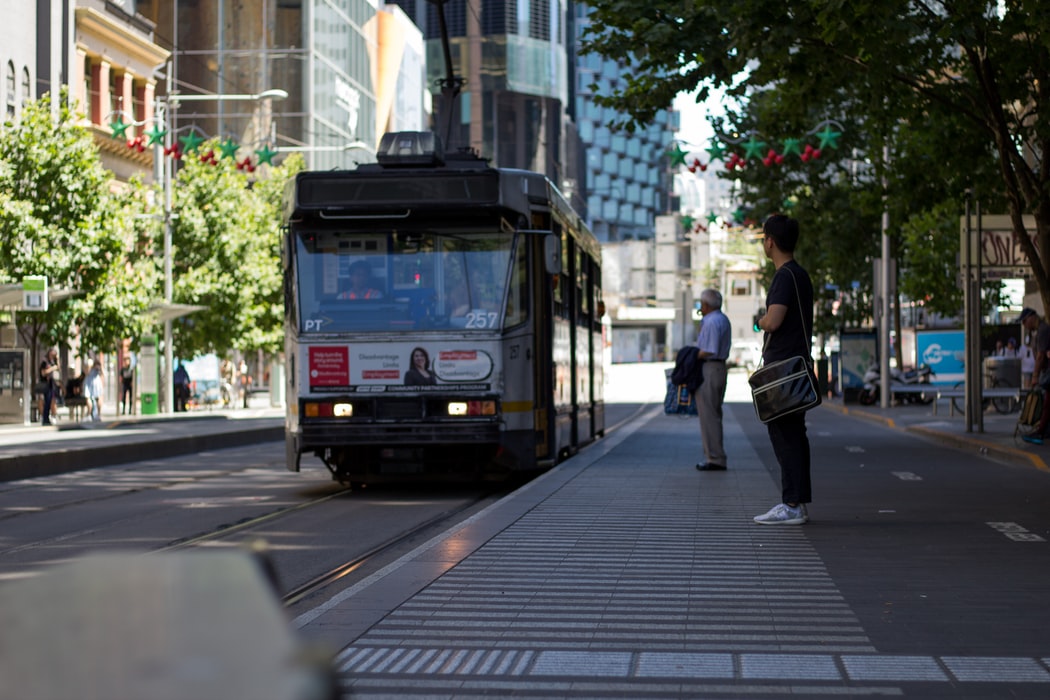Covid-19 has disrupted the mobility sector more than any startup ever has. I am offering a brief and personal analysis of what happened, choices that lay ahead of us and why public transport should become stronger despite social distancing. At a time where we are slowly digesting health guidelines, we have historical decisions to make to ensure that the future of mobility, our future, is sustainable.
The initial blow
The entire mobility sector has taken a serious blow in the past two months. Under lockdown, people’s movements have decreased by 50% to 80% (depending on countries’ guidelines), our usually congested cities were emptied of cars and pedestrians alike. Both well established companies and unicorns yesterday considered as the future of mobility – especially Mobility-as-a-service (MaaS) – were brought to their knees. Uber’s e-scooter sharing business Jump was quickly merged with the Lime, for a fraction of their pre-coronavirus valuation, incidentally sending tens of thousands of e-bikes to ‘recycling’. 100-year old car rental company Hertz filed for bankruptcy (Chapter 11) in the US, and the European leader of car-sharing Drivy, just months after being acquired by US-based Getaround, turned to the Paris Commercial Court to obtain its support, as a “preventive measure”. Car-sharing, scooter-sharing were supposed to lead the way to a world free of private cars to reduce our carbon footprint.
Some services were actually helpful to cope with the virus situation”.
Public transit too was strongly affected but so far managed to resist the first wave. Thanks to balanced public-private business models, relying on long-term contracts, public transit stakeholders are more resilient than other businesses. Even under the sternest lockdown measures, PT services were still considered as essential. There is to my knowledge no major public transit operator which declared bankrupt, nor have public authorities stated that public transit would be significantly downsized in the future. Some services, such as Demand-Responsive Transit, were actually helpful to cope with the virus situation: the “Night Bus” service in Padua, Italy (powered by Padam Mobility) was turned into a day service and increased ridership. Berlkönig in Berlin, also focused on night mobility, was extended for the benefit of health workers.
Post-lockdown prolonged effects on modal shares
Having labelled all these events as “Impacts of the Covid-19 crisis”, it is tempting to think that things will just go back to normal. In many ways, the crisis may have just accelerated trends which were already there. However, I think we should not underestimate how the coronavirus has single-handedly disrupted our vision of mobility, and maybe not for the better.
While European cities are witnessing the same behaviour, authorities also get that coronavirus may wipe out a decade of efforts to detox their citizens from private cars”.
During the first weeks of lifting social distancing measures, we have contemplated that a major shift was happening in modal share of mobility. Public transit is the place where you meet a lot of strangers. A full quarter of media and public obsession about health precautions (which, to a certain extent, was unavoidable) has convinced us that ‘stranger’ rhymes with ‘danger’. Bloomberg quotes Jason Rogers (Nashville, US): “I have no interest in getting on the bus or a ridesharing system unless I’m in a hazmat suit”. The result speaks for itself: in China – first to lift lockdown measures, the ridership of public transit is 35% below normal and congestion is already above 2019 average. The US are reporting a similar trend already.
While European cities are witnessing the same behaviour, authorities also get that coronavirus may wipe out a decade of efforts to detox their citizens from private cars. They had just a bit more time than China to anticipate and devised a few strategies. Betting on bikes is one of them: French Government claims 1,000 km of temporary bicycle lanes have been created and is working to permanently maintain them. The UK are investing up to £2B on “once-in-a-generation” plan to boost walking and cycling. Another interesting move is Athens banning cars from a large part of its city center for 3 months (and maybe more).
Will this be sufficient? These investments are much welcome, but the modal share of cycling has remained flat under 2% in the UK in the past decade and is estimated at about 3% in France. A 10% long-term reduction of ridership in public transit would be sufficient to level the impact of more people cycling. We can still fear a major shift from public transit to cars. In France, which hosts 3 of the handful of worldwide public transport operators (Transdev, Keolis, RATP), representatives of the sector have fought hard – but not very successfully – to avoid strict social distancing measures onboard metros and buses and to rely on masks as the main sanitary measure.
In the end, Transport for London (TfL) did not solve the dilemma of prioritizing congestion or health issues, they raised both the congestion tax on cars and the fares of public transit. At least TfL will not go bankrupt.

Source: Rystadenery
Psychological impact
Even now that the French Ministry is considering softening these measures, it is impossible to predict the magnitude of the psychological impact on how people choose their mode of transport. There are precedents: terrorist attacks in Madrid (2004) and London (2005), which targeted public transit, or Paris (2015) which targeted the “night life”. In each case, public transportation actually recovered in a matter of months. The issue is not the same, though: with the virus, it is more public transit itself and its riders which are the objects of people’s fear. We have also been exposed to the social distancing message for much longer and it may last until we have a vaccine.
Sure, people have talked a lot about the crisis as an opportunity to shift to a new trajectory for our civilization, towards decarbonation and resilience. But I hear the same people say: “No way I’m using the train at the moment, I’ll just drive.” As I don’t know much about sociology, I’ll quote an expert in very long adventures, Sylvain Tesson, telling about his travel by foot from Siberia to India: “If I say that I plan to walk all the way to Mongolia, nobody minds a such abstract goal, but if I claim that I will reach the other side of the mountain, everyone on this side will rebel. […] Because it is what we know best, we fear more what is close to us than what is still far away.” We fear the virus more than climate change.
Sorting our priorities
Climate change and resource depletion are still the two biggest problems that we face worldwide. When the virus hit, we were able to go under lockdown as a last resort to mitigate the effects of the virus. There will be no immediate actions similar to a lockdown that we will be able to take when we face record droughts killing entire crops, when coastal areas inhabited by tens of millions of people are flooded by a combination of sea level rise and extreme weather events.
We will not see flying cars, we will see more low-energy mobility and we should prepare for it”.
A key fact that I’ve realized few people know is the inertia and latency of GHE-induced climate change. When we added more than 100ppm of CO2 in the atmosphere, we committed to hundreds of years of rising temperatures, that is, even if our emissions drop to zero tomorrow. The trajectory of our CO2 emissions will change the magnitude of the climate change, but with a 20-year latency. Managing our emissions now starts to make a difference in 2040. In other words, we will not be able to prevent these issues in 2040, by then we will be late by 20 years (this is 4 French presidential terms, 5 US ones).

Global temperature change predictions based on GHG-scenarios of the IPCC.
Source: Climate model IPSL-CM61-LR
Another key fact going under the radar of public media is the depletion of oil, which powers ~98% of transportation. Oil production has grown strongly after the 2008 economic crisis (completely mindless of the above), but the growth came almost exclusively from the US ‘shale’ plays, while Russia and Saudi Arabia were able to offset the decline of older oil fields (starting with the North Sea in Europe). Before the coronavirus, some experts were already shifting their predictions for US production, stable in 2020 and growing again for at least a few years after. Russia had declared they would peak before 2025 and maybe sooner. Now, with the considerable blow to this industry, investments in new production have been widely cancelled and US oil fields declined rapidly. Some experts point that both US shale and Russia may have reached their peak, and at least will never see significant growth again (compared to 2019 levels). To better understand what this means for our economy, I recommend listening to independent experts of energy transition, The Shift Project. To cut it short: we will not see flying cars, nor mass production of 2.3 ton electric private cars, we will see more low-energy mobility and we should prepare for it.

![]()
According to Rystad, oil production and demand will still be under 2019 levels at the end of 2021.
Source: Rystadenergy
What to do?
The mission behind Padam Mobility, the company I co-founded, is “Taking care of shared mobility.” It means we expect less resources in the future, less public acceptance to emit greenhouse gases, but also that we do not give up on mobility. This will not be achieved through more efficient cars. The only way to solve this equation – apart from cycling probably – is to share vehicles more. There are many versions of that, good old public transport, Demand-Responsive Transit (as proposed by Padam Mobility), carpooling, vehicle-sharing economy (provided that it does not cannibalize public transport)… We can still do much more: make energy-efficient modes more convenient and cheaper than the car in cities and suburbs, force all taxis and ride-hailing vehicles in cities to be shared, re-think our streets primarily for public transport, transform our economy to rely less on the jobs of the car-making industry.
Let us follow the health guidelines, wear masks, skip unnecessary travel and take other necessary measures to avoid a new significant wave of coronavirus infections. But let us also trust people around us, learn to share more what can be shared, solve issues in a collaborative way. Our freedom and ability to move in the future depend on that. Just like wearing masks saves lives today, using and promoting public transport today preserves our society in 2040 and beyond.
It is a time to be ambitious about public transportation.
Grégoire Bonnat – Co-founder & CEO, Padam Mobility





